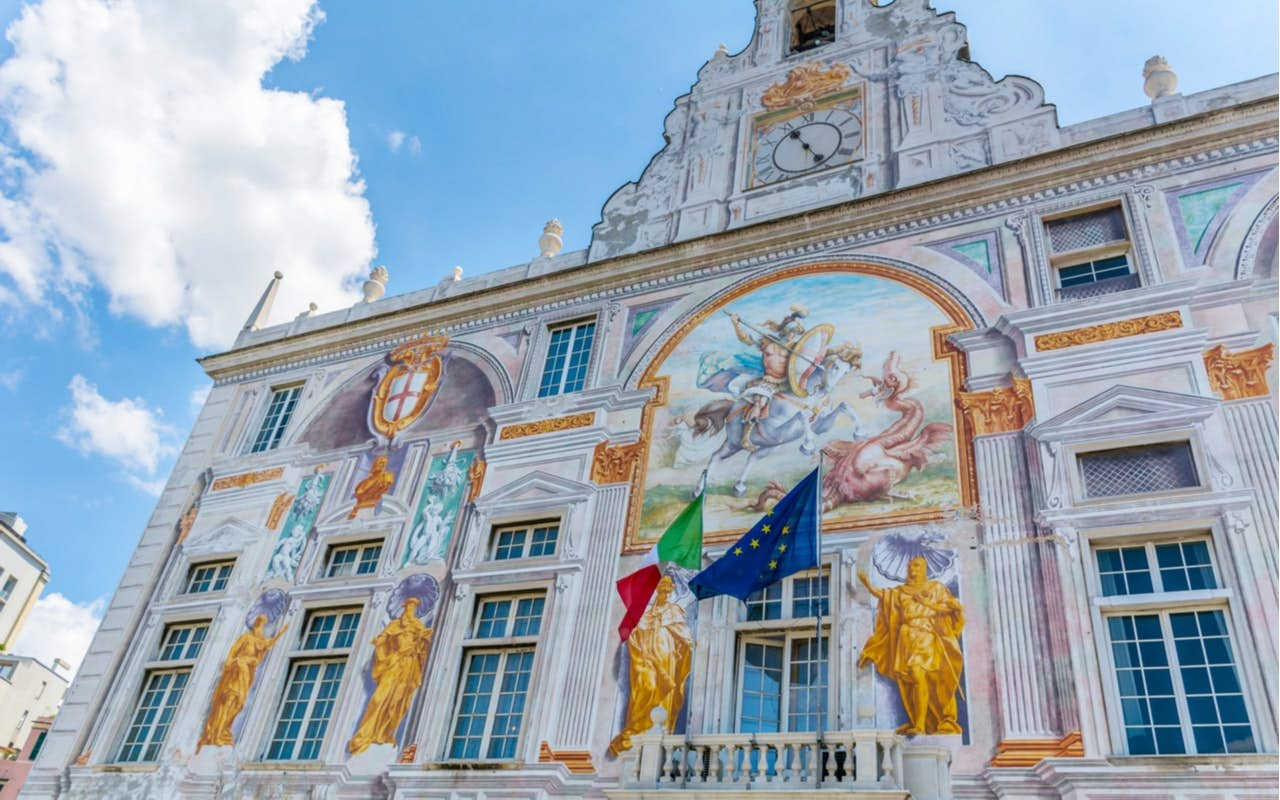Palazzo San Giorgio
About Palazzo San Giorgio
Palazzo San Giorgio, located at Via della Mercanzia 111 in Genoa, Italy, is one of the city’s most iconic landmarks, rich in history and architectural beauty. Built in the 13th century, this magnificent palace has played a significant role in Genoa’s political and economic life, serving as both a government building and a symbol of the city’s maritime power.
The location of Palazzo San Giorgio is as strategic as it is picturesque. Situated near the old harbor, the palace is surrounded by Genoa’s bustling port and historic center. This proximity to the sea underscores its historical importance as a hub for trade and diplomacy. The palace’s exterior is adorned with vibrant frescoes that depict Genoa’s patron saint, St. George, slaying the dragon—a powerful symbol of protection and strength.
What makes Palazzo San Giorgio unique is its dual function as both a historical monument and a functioning building. It currently houses the headquarters of the Port Authority, maintaining its relevance in the city’s maritime activities. The building itself is an architectural masterpiece, showcasing a blend of Gothic and Renaissance styles. Its impressive façade, decorated with intricate carvings and frescoes, tells the story of Genoa’s storied past.
The best time to visit Palazzo San Giorgio is during the warmer months, from late spring to early autumn, when Genoa’s weather is most pleasant, and the surrounding areas are vibrant with activity. Visitors can admire the palace’s exterior and take guided tours of the interior, which offers a glimpse into the opulent rooms and historic artifacts that have been preserved over the centuries. There is typically no admission fee to explore the exterior, but certain interior tours may require a small fee or prior arrangement.
One of the most fascinating legends associated with Palazzo San Giorgio is that of Marco Polo. It is said that the famous Venetian explorer was imprisoned in the palace during the late 13th century after being captured by the Genoese. During his captivity, he is believed to have dictated his famous travelogue, "The Travels of Marco Polo," to a fellow prisoner. This connection to one of history’s greatest explorers adds an intriguing layer to the palace’s already rich history.
Palazzo San Giorgio has also been a source of inspiration for various artistic works and has been featured in documentaries exploring Genoa’s maritime history. Its commanding presence and historical significance make it a must-see for anyone visiting Genoa, offering both a glimpse into the city’s past and a chance to appreciate its ongoing legacy.
Whether you are a history enthusiast, an architecture lover, or simply someone looking to explore Genoa’s cultural heritage, Palazzo San Giorgio provides a captivating experience that embodies the spirit and resilience of this storied city.
